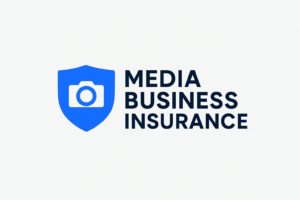How to Choose the Best Photography Insurance Policy – A Comprehensive Guide
As a photographer, whether you specialize in portraits, weddings, or commercial shoots, you know that your equipment is your livelihood. But what if something goes wrong? Whether it’s accidental damage to your gear, a lawsuit, or stolen equipment, the right photography insurance policy can provide the protection you need. In this article, we’ll guide you on how to choose the best photography insurance policy with Media Business Insurance.
Why Do You Need Photography Insurance?
Photography insurance is essential for safeguarding both your gear and your business. It’s easy to overlook, but accidents happen – and when they do, they can be costly. Photography insurance ensures that you’re covered for damage, theft, or even legal action. It also helps cover liability, equipment replacement, and lost income.
Key Coverage Areas of Photography Insurance:
-
Equipment Protection: Protect your cameras, lenses, tripods, and other essential tools. Insurance can cover damage, theft, and even loss while traveling.
-
Liability Coverage: If you’re working with clients or in public places, accidents can happen. Liability insurance protects you against legal claims and injuries.
-
Income Loss Protection: If you’re unable to work due to equipment failure or damage, income loss protection ensures that you can continue your business operations.
-
Commercial Property Insurance: If you own a studio, this covers damages to the property or equipment located on-site.
How to Choose the Best Photography Insurance Policy?
When shopping for photography insurance, here are the factors you should consider:
1. Understand Your Needs
Every photographer’s needs are different. A wedding photographer may require more comprehensive equipment insurance, while a portrait photographer might focus on liability. Take the time to assess your risks and determine which coverage areas matter most to your business.
2. Research Insurance Providers
Not all insurance providers offer photography-specific policies. Look for companies like Media Business Insurance that specialize in insurance for photographers. They understand the nuances of the industry and can tailor the policy to your specific requirements.
3. Coverage Limits
Ensure that the policy’s coverage limits are high enough to cover the full value of your equipment and the potential liabilities you might face. If your gear is worth $10,000, ensure that your policy covers at least that amount, if not more.
4. Review Policy Exclusions
Make sure you thoroughly understand what’s not covered in the policy. Some insurers may have exclusions, such as damage from negligence or certain types of accidents. Always check the fine print and make sure you’re fully covered.
5. Consider the Deductible
A deductible is the amount you must pay out-of-pocket before the insurance kicks in. Compare different policies to see which offers the best coverage with a deductible that suits your budget. A lower deductible can be appealing but may come with higher premiums.
6. Premium Costs
While it’s important to find a policy that offers sufficient protection, you also need to consider the costs. Make sure the premiums are affordable for your business, and balance the coverage you need with what fits within your budget. Speak with an advisor at Media Business Insurance to ensure you’re getting the best value.
7. Claims Process
A fast and efficient claims process is crucial in times of need. Research the claims process of potential insurance companies and choose one that’s known for providing quick and hassle-free support.
8. Additional Coverage
If you work internationally or travel often, you may need additional coverage for overseas shoots. Some policies include global protection, while others may require an added rider. Make sure you’re covered wherever your photography takes you.
Frequently Asked Questions (FAQs)
Q1: What types of photography insurance do I need? You’ll need coverage for equipment protection, liability, and income loss. If you work from a studio, commercial property insurance may also be necessary. Be sure to discuss your needs with your insurance provider.
Q2: How much does photography insurance cost? The cost of insurance depends on factors like the value of your equipment, the type of coverage you require, and the provider. On average, it can cost between $200 to $500 annually.
Q3: Can I get insurance for my photography gear if I work part-time? Yes! Photography insurance is available to both full-time and part-time photographers. You can tailor the policy to suit the scale of your business.
Q4: Does insurance cover damaged equipment caused by my own mistake? It depends on the policy. Some policies may exclude damages caused by negligence or human error, while others provide a certain level of protection in these situations.
Q5: Will my photography insurance cover losses while traveling abroad? Some policies offer worldwide coverage, but you should confirm this with your insurance provider. Additional coverage for international shoots can often be added to your policy.
Q6: Is photography insurance tax-deductible? Yes, in many cases, the premiums for photography insurance can be considered a business expense and may be tax-deductible. Check with your accountant to confirm.
Conclusion
Choosing the right photography insurance policy is essential for protecting your business, equipment, and livelihood. By assessing your specific needs, understanding the different coverage options, and partnering with a trusted provider like Media Business Insurance, you can ensure your business is properly protected. Make sure you review your options thoroughly and consult with an expert to make an informed decision.


